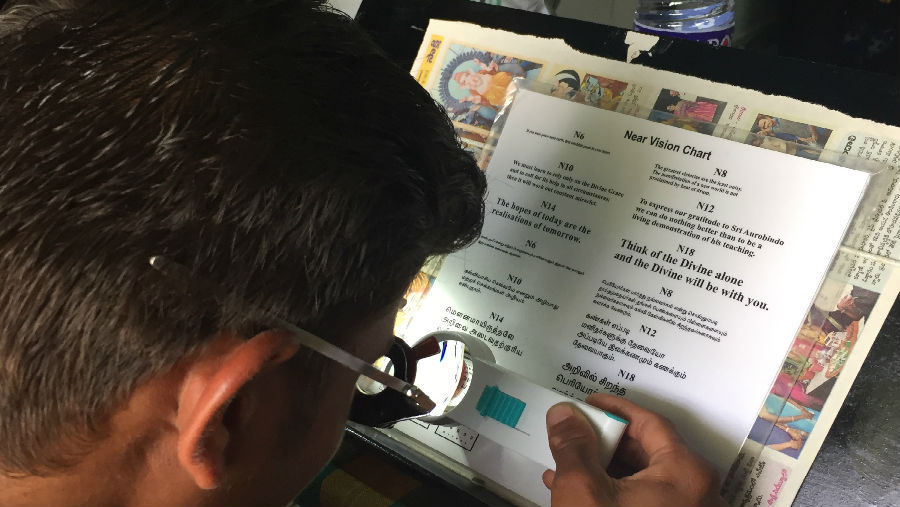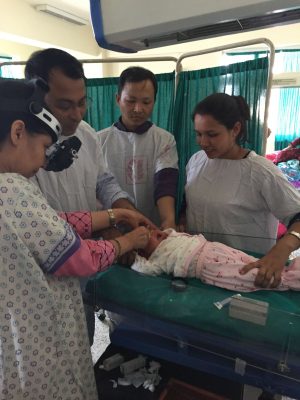Join a powerful, unprecedented alliance for better eye health for all.
Join IAPB-
Choose an alternate language here
On World/Universal Children’s Day, Victoria Sheffield, International Eye Foundation on the USAID Grants for Child Eye Health.
 A child’s eye is not simply a “small adult” eye. The structures are tighter and special instruments are needed to examine or perform surgery on a child’s eye, especially a newborn baby’s eye. Children who need eye surgery usually need general anesthesia because asking a child to lay very still for an hour simply won’t work. Pediatric ophthalmologists are somewhat of a rare breed and clinic staff who care for infants and children with eye disease need special training, technology, and a lot of patience. We cannot always help in the “patience” department, but we certainly can support specialty training and technology.
A child’s eye is not simply a “small adult” eye. The structures are tighter and special instruments are needed to examine or perform surgery on a child’s eye, especially a newborn baby’s eye. Children who need eye surgery usually need general anesthesia because asking a child to lay very still for an hour simply won’t work. Pediatric ophthalmologists are somewhat of a rare breed and clinic staff who care for infants and children with eye disease need special training, technology, and a lot of patience. We cannot always help in the “patience” department, but we certainly can support specialty training and technology.
The US Agency for International Development (USAID) Child Blindness Program (CBP) has been supporting pediatric eye care programmes in developing countries for nearly 30 years. Funding for this programme originated with a directive from the US Congress that works through USAID. It is a worldwide grants programme delivering and expanding coverage of quality eye care services to children and other vulnerable populations who have limited access to sight-saving services. CBP also increases the knowledge-base of preferred practices, and evidence-based and innovative approaches to pediatric eye care.

The International Eye Foundation (IEF) served as the Technical Advisory Group (TAG) to USAID CBP during 2013-2018 and is proud to be serving as the TAG for 2018-2023. From 2013-2018, 53 grants totaling US $8,824,149 were awarded to US and foreign NGOs, and hospitals in 23 countries around the globe. The grants ranged from just under $100,000 to $350,000. CBP provided grants in two categories. In the Delivery & Expansion category, 48 projects were funded which primarily focused on screening and refractive error services, Retinopathy of Prematurity (ROP), pediatric ocular surgery, and low vision/education & rehabilitation. Under the Innovation & Knowledge category, 15 projects were funded conducting operational research on methodologies or technology that moved the eye care community forward to better serve children with visual impairment.
Overall achievements from 2013-2018 include:
CBP’s request for applications (RFA) for 2018-2023 will be announced through the CBP website at https://www.usaid.gov/childblindness and through email to individuals who have registered with the programme. If you would like to receive the RFA, please send your name and email address to the CBP Program Manager, Lily Riva, MPH at [email protected]
Image on Top: Aravind/Pondicherry, India low vision project in 2016/ Victoria Sheffield
All images courtesy: Victoria Sheffield
Image: Simon Way/Sightsavers